-
 Bitcoin
Bitcoin $81,713.6612
7.25% -
 Ethereum
Ethereum $1,590.9680
9.58% -
 Tether USDt
Tether USDt $0.9994
0.01% -
 XRP
XRP $1.9850
10.67% -
 BNB
BNB $576.0587
4.07% -
 USDC
USDC $1.0000
0.00% -
 Solana
Solana $113.7300
8.81% -
 Dogecoin
Dogecoin $0.1556
7.17% -
 TRON
TRON $0.2415
5.62% -
 Cardano
Cardano $0.6187
9.82% -
 UNUS SED LEO
UNUS SED LEO $9.4126
2.91% -
 Chainlink
Chainlink $12.3029
9.39% -
 Avalanche
Avalanche $17.9538
9.86% -
 Toncoin
Toncoin $2.9760
-0.26% -
 Stellar
Stellar $0.2331
6.97% -
 Hedera
Hedera $0.1699
13.76% -
 Shiba Inu
Shiba Inu $0.0...01187
9.44% -
 Sui
Sui $2.1263
9.63% -
 MANTRA
MANTRA $6.6607
7.28% -
 Bitcoin Cash
Bitcoin Cash $292.9636
8.52% -
 Litecoin
Litecoin $73.2688
4.21% -
 Polkadot
Polkadot $3.4728
1.93% -
 Dai
Dai $0.9999
0.01% -
 Bitget Token
Bitget Token $4.2757
5.61% -
 Ethena USDe
Ethena USDe $0.9988
0.02% -
 Hyperliquid
Hyperliquid $14.0411
14.28% -
 Pi
Pi $0.5913
5.64% -
 Monero
Monero $204.6332
5.30% -
 Uniswap
Uniswap $5.1398
7.17% -
 OKB
OKB $53.2668
4.09%
How is Chainlink different from other oracle projects?
Chainlink's decentralized nature, flexibility, and strong security measures set it apart from other oracle projects, making it suitable for various industries.
Apr 03, 2025 at 11:29 pm
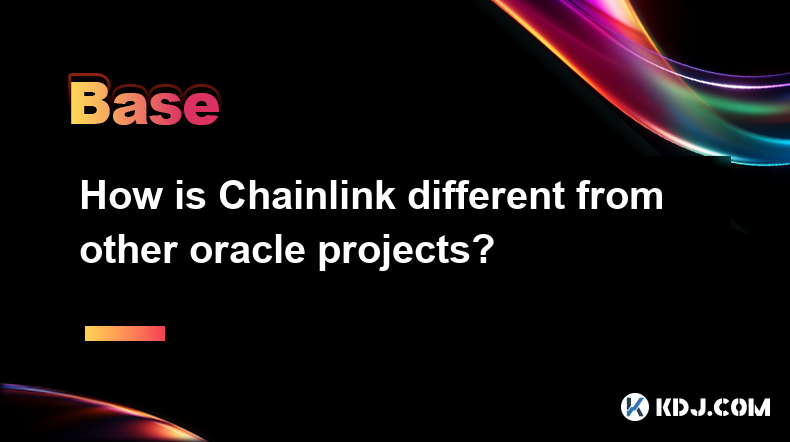
Chainlink is a decentralized oracle network that connects smart contracts with real-world data and external APIs. Unlike other oracle projects, Chainlink has several unique features that set it apart. One of the key differences is its decentralized nature, which ensures that no single entity controls the data flow. This decentralization is achieved through a network of node operators who provide data to smart contracts. Additionally, Chainlink uses a reputation system to ensure the reliability of its data sources. This system rewards node operators for providing accurate data and penalizes them for providing inaccurate data.
Chainlink also stands out due to its flexibility and interoperability. It supports a wide range of data types and can connect to various external data sources. This makes it suitable for a variety of use cases, from financial markets to supply chain management. Another distinguishing feature is its use of cryptographic proofs, which ensure the integrity of the data being fed into smart contracts. These proofs allow smart contracts to verify the authenticity of the data they receive, enhancing their security and reliability.
Furthermore, Chainlink has a strong focus on security. It employs multiple layers of security measures, including data encryption, secure multi-party computation, and off-chain reporting. These measures help protect the network from potential attacks and ensure the confidentiality of the data being transmitted. Chainlink also has a robust governance model, which allows the community to participate in decision-making processes. This model ensures that the network evolves in a way that benefits all stakeholders.
In contrast, many other oracle projects are more centralized and rely on a smaller number of data providers. This centralization can lead to single points of failure and make the network more vulnerable to manipulation. Additionally, some other oracle projects may not offer the same level of flexibility and interoperability as Chainlink. They may be limited to specific data types or have fewer connections to external data sources. This can restrict their use cases and make them less versatile than Chainlink.
Decentralization and Reliability
One of the most significant differences between Chainlink and other oracle projects is its decentralized architecture. Chainlink's network consists of numerous independent node operators who compete to provide data to smart contracts. This competition ensures that the data is reliable and accurate, as node operators are incentivized to provide the best possible service. In contrast, many other oracle projects rely on a smaller number of centralized data providers, which can lead to a higher risk of data manipulation and single points of failure.
Chainlink's reputation system further enhances the reliability of its data. Node operators are rated based on their performance, and those with higher ratings are more likely to be selected to provide data. This system encourages node operators to maintain high standards and discourages them from providing inaccurate data. Additionally, Chainlink's use of cryptographic proofs allows smart contracts to verify the authenticity of the data they receive, adding an extra layer of security and reliability.
Flexibility and Interoperability
Chainlink's flexibility and interoperability are other key factors that set it apart from other oracle projects. It supports a wide range of data types, including price feeds, weather data, and sports scores. This versatility allows Chainlink to be used in a variety of applications, from decentralized finance (DeFi) to gaming and beyond. Additionally, Chainlink can connect to various external data sources, including APIs, traditional databases, and even other blockchains. This broad connectivity makes it a powerful tool for developers looking to build complex, data-driven applications.
In contrast, many other oracle projects are more limited in their data support and connectivity. They may only support a few specific data types or have limited connections to external data sources. This can restrict their use cases and make them less versatile than Chainlink. For example, some oracle projects may only provide price feeds for cryptocurrencies, while Chainlink can provide a much wider range of data types and connect to a broader array of data sources.
Security and Governance
Security is a critical aspect of any oracle project, and Chainlink takes this seriously. It employs multiple layers of security measures to protect the network and the data it transmits. These measures include data encryption, secure multi-party computation, and off-chain reporting. Data encryption ensures that the data being transmitted is protected from unauthorized access. Secure multi-party computation allows multiple parties to jointly perform computations on private data without revealing their inputs. Off-chain reporting allows node operators to aggregate data off-chain before submitting it to the blockchain, reducing the on-chain footprint and enhancing privacy.
Chainlink also has a robust governance model that allows the community to participate in decision-making processes. This model ensures that the network evolves in a way that benefits all stakeholders. The governance model includes a decentralized autonomous organization (DAO) that allows token holders to vote on proposals and changes to the network. This democratic approach to governance helps ensure that the network remains decentralized and that the interests of all participants are taken into account.
Use Cases and Adoption
Chainlink's unique features have led to its widespread adoption across various industries. In the DeFi sector, Chainlink is used to provide price feeds for decentralized lending and borrowing platforms, as well as for decentralized exchanges. These price feeds are crucial for ensuring that these platforms can operate accurately and securely. Chainlink is also used in the gaming industry, where it provides random number generation for games and other applications. This ensures that the outcomes of these games are fair and unpredictable.
In the supply chain industry, Chainlink is used to track the movement of goods and ensure their authenticity. By connecting smart contracts to real-world data, Chainlink can help companies verify the origin and quality of their products. This can enhance transparency and trust in supply chains, leading to more efficient and secure operations. Chainlink's versatility and reliability have made it a popular choice for developers and businesses looking to leverage the power of smart contracts and blockchain technology.
Comparison with Other Oracle Projects
When comparing Chainlink to other oracle projects, several key differences emerge. For example, Band Protocol is another decentralized oracle network, but it has a different architecture and focus. Band Protocol uses a delegated proof-of-stake (DPoS) consensus mechanism, which is different from Chainlink's decentralized network of node operators. Additionally, Band Protocol focuses more on providing data for decentralized applications (dApps) and less on the wide range of data types and external data sources that Chainlink supports.
Another example is Tellor, which is a decentralized oracle network that focuses on providing price feeds for cryptocurrencies. While Tellor is decentralized and uses a reputation system similar to Chainlink, it is more limited in its data support and connectivity. Tellor primarily provides price feeds for cryptocurrencies, whereas Chainlink supports a much wider range of data types and can connect to a broader array of data sources. This makes Chainlink more versatile and suitable for a wider range of use cases.
Future Developments and Innovations
Chainlink continues to innovate and expand its capabilities. One of the most exciting developments is the introduction of Chainlink 2.0, which aims to enhance the network's scalability and performance. Chainlink 2.0 introduces new features such as off-chain reporting, which allows node operators to aggregate data off-chain before submitting it to the blockchain. This reduces the on-chain footprint and enhances the efficiency of the network. Additionally, Chainlink 2.0 introduces a new consensus mechanism called "Threshold Signature Scheme" (TSS), which enhances the security and reliability of the network.
Another area of innovation is the integration of Chainlink with other blockchain platforms. Chainlink has already integrated with several major blockchains, including Ethereum, Polkadot, and Solana. These integrations allow developers to build cross-chain applications that can leverage the strengths of multiple blockchains. This enhances the interoperability and flexibility of Chainlink, making it an even more powerful tool for developers and businesses.
Community and Ecosystem
Chainlink has a strong and active community that contributes to its development and adoption. The Chainlink community includes developers, node operators, and businesses that use the network to build and deploy their applications. This community is supported by the Chainlink ecosystem, which includes a range of tools and resources to help developers build and deploy their applications. These tools include the Chainlink Developer Hub, which provides documentation and tutorials, and the Chainlink Grant Program, which provides funding for developers to build innovative applications on the network.
The Chainlink ecosystem also includes a range of partnerships and collaborations with other companies and organizations. These partnerships help to expand the reach and capabilities of the network, making it more accessible and useful for a wider range of users. For example, Chainlink has partnered with major financial institutions to provide price feeds for their decentralized lending and borrowing platforms. These partnerships help to enhance the reliability and accuracy of the data provided by Chainlink, making it a trusted source of information for these platforms.
Technical Details and Implementation
Chainlink's technical architecture is designed to ensure the reliability and security of the data it provides. The network consists of a series of smart contracts and node operators that work together to provide data to smart contracts. The smart contracts are responsible for defining the data requirements and the rules for selecting node operators. The node operators are responsible for providing the data and ensuring its accuracy and reliability.
Chainlink uses a reputation system to ensure the reliability of its data sources. Node operators are rated based on their performance, and those with higher ratings are more likely to be selected to provide data. This system encourages node operators to maintain high standards and discourages them from providing inaccurate data. Additionally, Chainlink uses cryptographic proofs to ensure the integrity of the data being fed into smart contracts. These proofs allow smart contracts to verify the authenticity of the data they receive, enhancing their security and reliability.
Challenges and Limitations
Despite its many strengths, Chainlink faces several challenges and limitations. One of the main challenges is the scalability of the network. As the number of node operators and the volume of data being transmitted increase, the network can become congested and slow. Chainlink is addressing this challenge through the introduction of Chainlink 2.0, which aims to enhance the network's scalability and performance. However, it remains to be seen how effective these improvements will be in practice.
Another challenge is the complexity of integrating Chainlink with other systems and applications. While Chainlink is designed to be flexible and interoperable, it can still be challenging for developers to integrate it with their existing systems and applications. This can limit the adoption of Chainlink and make it more difficult for businesses to leverage its capabilities. Chainlink is working to address this challenge by providing more tools and resources to help developers integrate the network with their systems and applications.
Common Questions and Answers
Q: What makes Chainlink different from other oracle projects?
A: Chainlink is different from other oracle projects due to its decentralized nature, flexibility, and strong focus on security. It uses a network of independent node operators and a reputation system to ensure the reliability of its data sources. Additionally, Chainlink supports a wide range of data types and can connect to various external data sources, making it suitable for a variety of use cases.
Q: How does Chainlink ensure the reliability of its data?
A: Chainlink ensures the reliability of its data through a combination of a decentralized network of node operators, a reputation system, and cryptographic proofs. Node operators are rated based on their performance, and those with higher ratings are more likely to be selected to provide data. Cryptographic proofs allow smart contracts to verify the authenticity of the data they receive, enhancing their security and reliability.
Q: What are some of the use cases for Chainlink?
A: Chainlink is used in a variety of industries, including decentralized finance (DeFi), gaming, and supply chain management. In DeFi, Chainlink provides price feeds for decentralized lending and borrowing platforms and decentralized exchanges. In gaming, it provides random number generation for games and other applications. In supply chain management, Chainlink is used to track the movement of goods and ensure their authenticity.
Q: What are some of the future developments and innovations for Chainlink?
A: Chainlink is working on several future developments and innovations, including the introduction of Chainlink 2.0, which aims to enhance the network's scalability and performance. Chainlink 2.0 introduces new features such as off-chain reporting and a new consensus mechanism called "Threshold Signature Scheme" (TSS). Additionally, Chainlink is integrating with other blockchain platforms to enhance its interoperability and flexibility.
Q: What are some of the challenges and limitations of Chainlink?
A: Some of the challenges and limitations of Chainlink include scalability issues and the complexity of integrating the network with other systems and applications. As the number of node operators and the volume of data being transmitted increase, the network can become congested and slow. Additionally, it can be challenging for developers to integrate Chainlink with their existing systems and applications, which can limit its adoption.
Disclaimer:info@kdj.com
The information provided is not trading advice. kdj.com does not assume any responsibility for any investments made based on the information provided in this article. Cryptocurrencies are highly volatile and it is highly recommended that you invest with caution after thorough research!
If you believe that the content used on this website infringes your copyright, please contact us immediately (info@kdj.com) and we will delete it promptly.
- Why You Should Listen to This Episode
- 2025-04-10 19:35:13
- Sonic (SUI) Co-Founder Andre Cronje Teases New Algorithmic Stablecoin Launching Within Five Weeks
- 2025-04-10 19:35:13
- President Donald Trump’s WLF wants people to ‘be DeFiant’, taking the financial freedom of decentralized finance to the masses
- 2025-04-10 19:30:13
- PCE price index report set for release on March 28, which could play a key role in shaping market sentiment.
- 2025-04-10 19:30:13
- Ethereum (ETH) Market Reels From Trump's New "Liberation Day" Tariffs
- 2025-04-10 19:25:13
- Don't Be Fooled by Wednesday's Market Turnaround
- 2025-04-10 19:25:13
Related knowledge
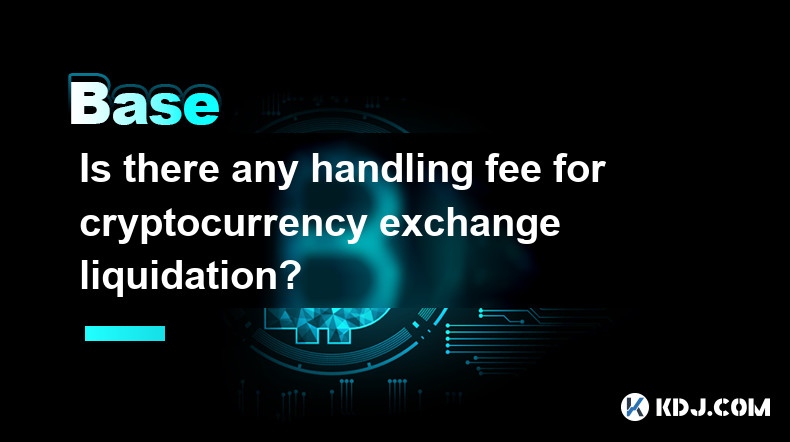
Is there any handling fee for cryptocurrency exchange liquidation?
Apr 10,2025 at 04:29pm
When trading contracts on cryptocurrency exchanges, liquidation is a word that scares investors. A liquidation means that the investor has lost all its principal. So, will the exchange still charge a handling fee when the liquidation is liquidated? This is a concern for many investors. This article will give a detailed answer to this. Important statemen...
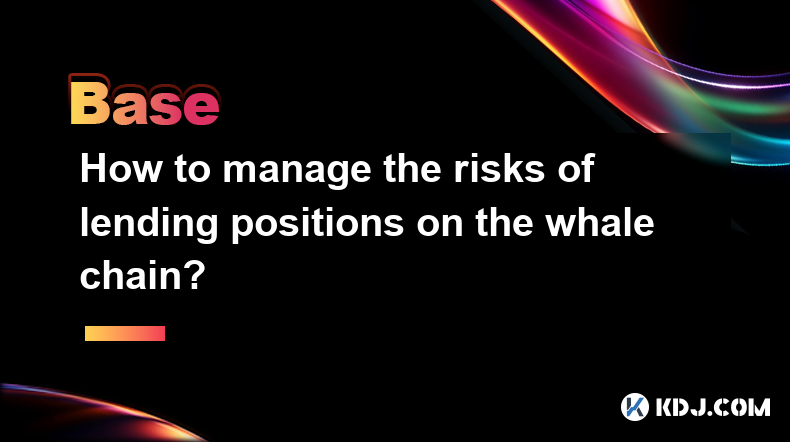
How to manage the risks of lending positions on the whale chain?
Apr 09,2025 at 10:50pm
To manage the risks of lending positions on the whale chain, we need to start from the following aspects: 1. Reasonable control of positions and leverage:Determine the appropriate lending scale and leverage multiple based on your own risk tolerance to avoid excessive leverage. For example, if whales do not have a particularly strong grasp of the market ...
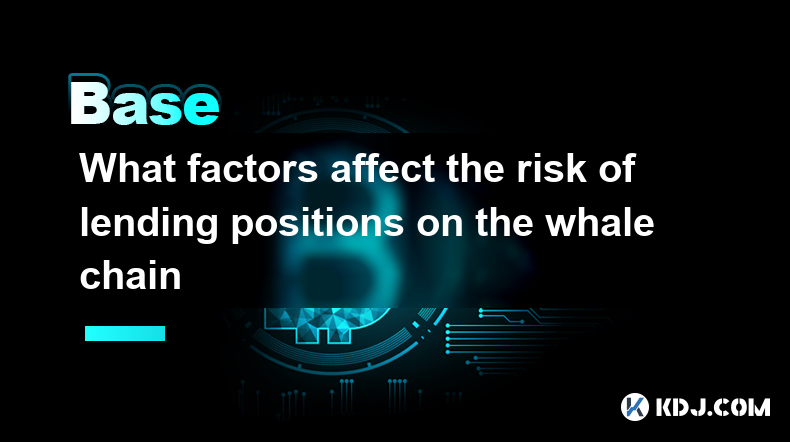
What factors affect the risk of lending positions on the whale chain
Apr 10,2025 at 12:35am
Here are some factors that will affect the risk of lending positions on the whale chain: 1. Market price fluctuations:The decline in collateral prices will cause the collateral value to shrink and may trigger liquidation. For example, a whale borrowed 75.69 million DAI with 60,810 ETH. When the price of ETH falls, its position health will drop sharply a...
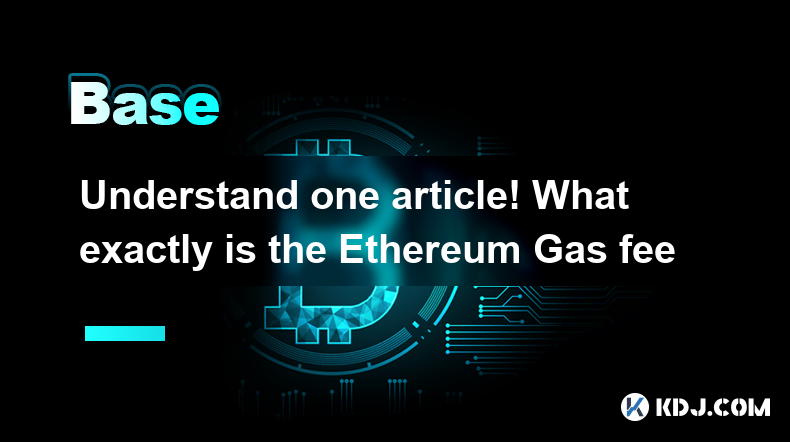
Understand one article! What exactly is the Ethereum Gas fee
Apr 10,2025 at 03:21am
The Ethereum Gas fee refers to the fees paid when trading or executing smart contracts on the Ethereum blockchain, which is used to compensate miners for the computing resources consumed by verifying and packaging exchanges. Here is a detailed introduction to it: Gas concept Gas can be regarded as the “fuel” in the Ethereum network. Ethereum is regarded...
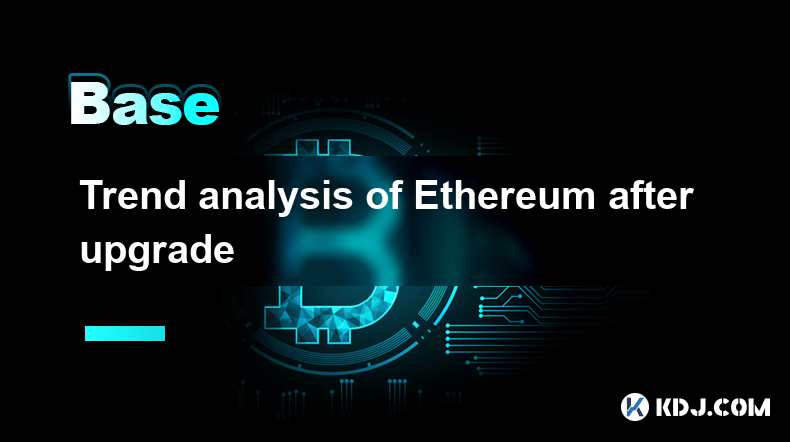
Trend analysis of Ethereum after upgrade
Apr 10,2025 at 04:01am
As a pioneer in blockchain technology, Ethereum has a profound impact on the entire digital asset field every upgrade. Accurately predicting upgraded market trends is crucial for investors and developers. This article will explore in-depth various trends that may appear after the upgrade of Ethereum, helping you grasp the pulse of the market and underst...
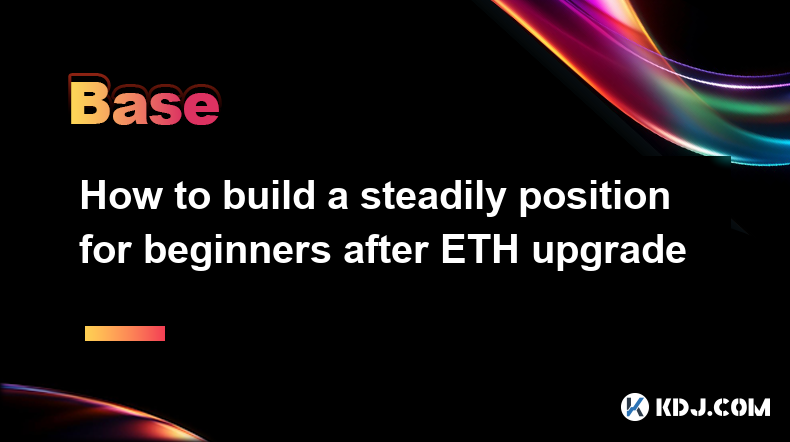
How to build a steadily position for beginners after ETH upgrade
Apr 10,2025 at 04:49pm
The upgrade of Ethereum (ETH) is a grand event in the digital asset field, providing an excellent opportunity for beginner investors. However, the market is volatile and direct investment may face higher risks. This article will provide novices with a stable guide to building positions, helping everyone move forward steadily after ETH upgrade, reduce ri...

Is there any handling fee for cryptocurrency exchange liquidation?
Apr 10,2025 at 04:29pm
When trading contracts on cryptocurrency exchanges, liquidation is a word that scares investors. A liquidation means that the investor has lost all its principal. So, will the exchange still charge a handling fee when the liquidation is liquidated? This is a concern for many investors. This article will give a detailed answer to this. Important statemen...

How to manage the risks of lending positions on the whale chain?
Apr 09,2025 at 10:50pm
To manage the risks of lending positions on the whale chain, we need to start from the following aspects: 1. Reasonable control of positions and leverage:Determine the appropriate lending scale and leverage multiple based on your own risk tolerance to avoid excessive leverage. For example, if whales do not have a particularly strong grasp of the market ...

What factors affect the risk of lending positions on the whale chain
Apr 10,2025 at 12:35am
Here are some factors that will affect the risk of lending positions on the whale chain: 1. Market price fluctuations:The decline in collateral prices will cause the collateral value to shrink and may trigger liquidation. For example, a whale borrowed 75.69 million DAI with 60,810 ETH. When the price of ETH falls, its position health will drop sharply a...

Understand one article! What exactly is the Ethereum Gas fee
Apr 10,2025 at 03:21am
The Ethereum Gas fee refers to the fees paid when trading or executing smart contracts on the Ethereum blockchain, which is used to compensate miners for the computing resources consumed by verifying and packaging exchanges. Here is a detailed introduction to it: Gas concept Gas can be regarded as the “fuel” in the Ethereum network. Ethereum is regarded...

Trend analysis of Ethereum after upgrade
Apr 10,2025 at 04:01am
As a pioneer in blockchain technology, Ethereum has a profound impact on the entire digital asset field every upgrade. Accurately predicting upgraded market trends is crucial for investors and developers. This article will explore in-depth various trends that may appear after the upgrade of Ethereum, helping you grasp the pulse of the market and underst...

How to build a steadily position for beginners after ETH upgrade
Apr 10,2025 at 04:49pm
The upgrade of Ethereum (ETH) is a grand event in the digital asset field, providing an excellent opportunity for beginner investors. However, the market is volatile and direct investment may face higher risks. This article will provide novices with a stable guide to building positions, helping everyone move forward steadily after ETH upgrade, reduce ri...
See all articles





















































































